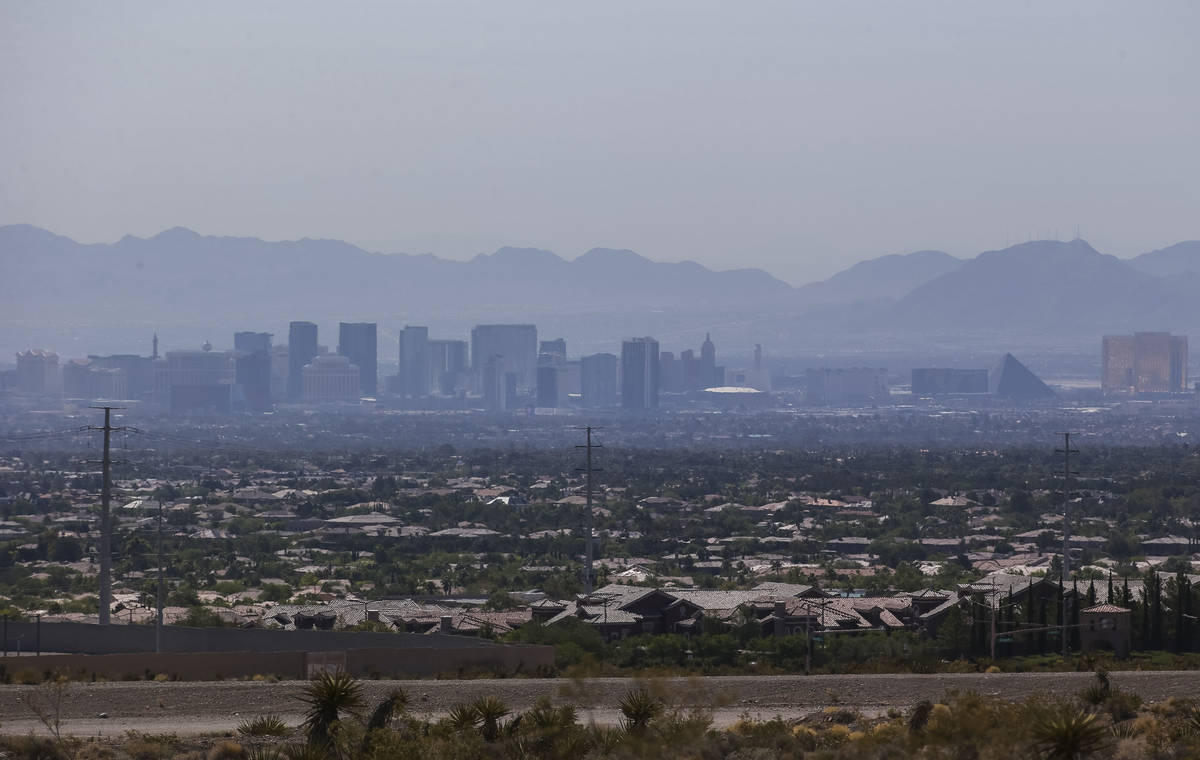Clark County rebuts report of Las Vegas’ declining air quality
A report by the American Lung Association says air quality in Las Vegas has gotten worse, but Clark County says it’s been improving for more than a decade.
ALA researchers examined data from 2016-2018 in this year’s State of the Air report, which ranked Las Vegas as the ninth most ozone-polluted city in the U.S. — up from No. 13 in the 2019 report — and the 25th most affected by short-term particle pollution.
Las Vegas didn’t make the top 25 for particle pollution in the 2019 report, which used data from 2014-2016.
The county released a rebuttal to the results on Monday, hours before the report was officially released, calling the ALA’s failing grade for the county “questionable.”
Ozone pollution in the area has decreased by 12 percent since 2007, and California wildfires greatly contributed to particle pollution, according to the county.
The county said it follows the Environmental Protection Agency’s standards for measuring air pollution, which rate the ozone pollution level in Clark County as “good” or “moderate” 93.5 percent of the time.
“If we’re applying the American Lung Association’s arbitrary and subjective grading scale, anything below 99.2 percent is considered failing,” Marci Henson, director of the county Department of Environment and Sustainability, said in a statement. “That doesn’t make sense to us.”
The county said that while air quality is in line with safe pollutant levels for five of the six EPA criteria, it is in “marginal nonattainment” for ozone.
“Though our air quality is good and continues to improve, ozone continues to be our No. 1 challenge during the summer months,” Henson said. “However, with the exception of wildfire years in 2017 and 2018, ozone has been on the decline for the past several years.”
Harmful to lungs
Ozone is a gas that exists naturally in the atmosphere but can build up at ground level during the day because of high temperatures, chemical vapors and vehicle emissions.
Exposure to ozone can exacerbate respiratory issues and cause symptoms in people without them.
“If you think of it in terms of how a sunburn can burn your skin, ozone burns the tissue in your lungs,” said Will Barrett, director of air quality and climate change advocacy for the ALA.
Both the county and Barrett said that wildfires in California, particularly a spate of 2018 fires in the northern part of the state, contributed to particulate pollution in the years examined for the study.
Particulate pollution includes fine particles such ash, dust and smoke, which can cause respiratory issues or pass into the bloodstream and cause further harm.
Members of vulnerable groups, such as those with respiratory illnesses or the very old or young, should pay attention to county air quality notices and take steps to protect their health, Barrett said.
That includes limiting time outside and strenuous activities. Parents should keep a close eye on children to watch for asthma attacks or other medical episodes.
The county said residents can help lower ground-level ozone pollution by keeping vehicles well-maintained, filling gas tanks after sunset, using electric instead of gas-powered lawn equipment and using public transport or reducing the distance they drive in personal vehicles.
Barrett said county and state officials can continue to make improvements to public transit and traffic management systems, as well as work to meet the standards set out in a renewable energy bill Gov. Steve Sisolak signed last year.
“We have a great relationship with our local chapter of the American Lung Association,” said Henson. “Both our organizations strive to achieve the same goals. Despite our disagreement with their report, we will continue to build on our partnership at the local level to educate and inform our community about how we protect the air we share and also how individuals can protect it, too.”
Contact Max Michor at mmichor@reviewjournal.com or 702-383-0365. Follow @MaxMichor on Twitter.























